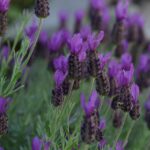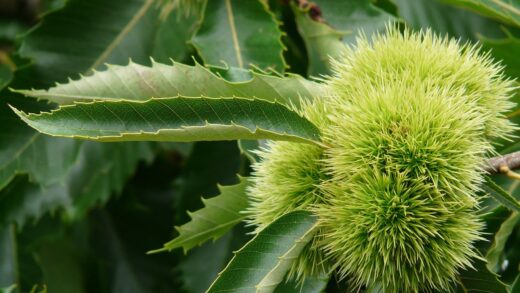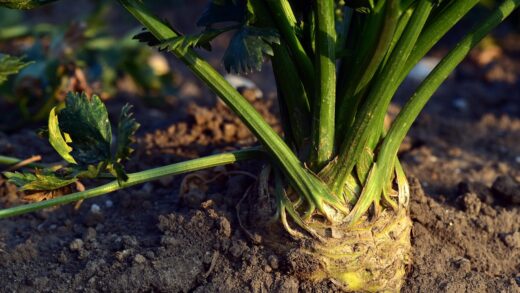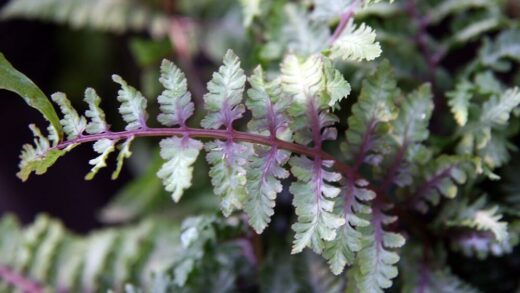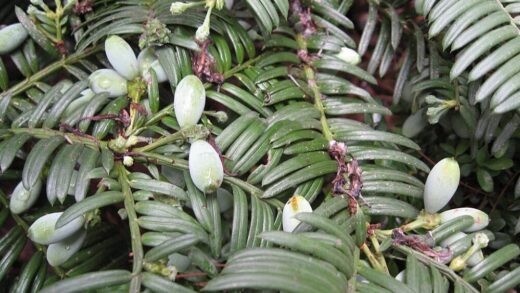As a deciduous perennial, the japanese lady fern has a natural and well-adapted strategy for surviving the cold winter months. Understanding and supporting this dormant period is crucial for ensuring the plant’s health and its vigorous return in the spring. As autumn temperatures fall, the fern’s beautiful fronds will gradually turn yellow and then brown, eventually dying back to the ground. This is not a sign of distress but a normal and necessary part of its life cycle, as the plant withdraws its energy from the foliage and stores it in its underground rhizomes for the winter. The gardener’s role during this transition is to provide the right conditions and protection to help the plant through its winter rest.
The primary goal of overwintering is to protect the dormant rhizomes from the two main winter threats: extreme cold and the damaging effects of repeated freeze-thaw cycles. While the japanese lady fern is quite hardy, generally surviving in zones 4 through 9, the shallowly-planted rhizomes can be vulnerable, especially in colder climates or during winters with little insulating snow cover. A simple layer of protective mulch applied in the fall can make a significant difference in its survival and spring vigor.
The timing of winter preparations is important. It is best to wait until after the first hard frost has naturally killed the foliage before taking any significant action. Cutting the fronds back too early while they are still green can interfere with the plant’s process of drawing nutrients back into the rhizomes. Similarly, applying a thick layer of mulch too early, before the ground has cooled, can trap warmth and moisture, potentially leading to crown rot. Patience is key to working with the plant’s natural rhythms.
For ferns grown in containers, the overwintering strategy needs to be slightly different. The soil in a pot is exposed to cold air from all sides, making it freeze much faster and more solidly than the ground. This puts the roots and rhizomes at a much greater risk of damage. Therefore, container-grown ferns require additional protection or a change of location to survive the winter, especially in climates at the colder end of their hardiness range.
Preparing the fern for dormancy
The preparation for winter dormancy begins in late summer and early autumn. During this period, it is essential to cease all fertilization. Applying fertilizer late in the season can encourage a flush of new, tender growth that will not have time to harden off before the first frost, making it extremely susceptible to cold damage. Allow the fern to slow its growth naturally as the days shorten and temperatures cool.
More articles on this topic
As autumn progresses, you should also gradually reduce supplemental watering. The plant’s water needs decrease as it enters dormancy, and overly wet soil in the winter can promote rot. Continue to provide some moisture during dry autumn spells to ensure the rhizomes do not become completely desiccated before the ground freezes, but allow the soil to dry out more between waterings than you would during the summer.
The question of when to cut back the dead fronds is a matter of both aesthetics and practicality. Many gardeners prefer to leave the dead fronds in place throughout the winter. These collapsed fronds provide a natural layer of insulation over the crown of the plant, helping to protect it from cold and wind. They also help to trap insulating snow, further protecting the rhizomes from fluctuating temperatures.
If you prefer a tidier garden appearance over the winter, you can cut the fronds back to the ground. However, it is best to wait until they are completely brown and have been killed by a hard frost. After cutting them back, it becomes even more important to apply a protective layer of winter mulch, as you have removed the plant’s natural insulation. The dead fronds can be added to the compost pile, contributing to the creation of future soil enrichment.
The crucial role of winter mulching
Applying a layer of winter mulch is the single most effective action you can take to protect your in-ground japanese lady fern. The primary purpose of this mulch is not to keep the ground warm, but rather to keep it consistently cold. It acts as an insulating blanket that helps to prevent the damaging freeze-thaw cycles that can occur during sunny winter days, which can heave the plant’s crown out of the ground and damage the rhizomes.
More articles on this topic
The best time to apply winter mulch is in late autumn, after the first few hard frosts but before the ground freezes solid. This timing ensures that the plant is fully dormant and the ground has had a chance to cool down. Applying mulch too early can trap ground heat, which may delay dormancy and even encourage rot. A layer of 2 to 4 inches (5 to 10 cm) of mulch is generally sufficient.
Excellent materials for winter mulch include shredded leaves, pine needles (pine straw), or chopped straw. These materials are light and airy, so they insulate well without compacting and smothering the plant’s crown. Avoid heavy, dense materials like wet leaves or thick layers of wood chips, which can hold too much moisture and may lead to rot over the winter. The mulch should be applied loosely over the crown and around the base of the plant.
In the spring, it is important to manage this winter mulch layer correctly. As the weather warms and the threat of hard frost has passed, gently pull the mulch away from the very center of the crown. This allows sunlight and warmer air to reach the soil, encouraging the plant to break dormancy and send up its new fiddleheads. The remaining mulch can be left in place around the plant to transition into a summer mulch, conserving moisture and suppressing weeds.
Overwintering ferns in containers
Japanese lady ferns grown in containers require a more deliberate overwintering strategy because their roots are far more exposed to cold. A plant that is perfectly hardy in the ground in a given zone may not survive the winter in a pot in that same zone without protection. The soil in the container can freeze solid, killing the rhizomes. Therefore, simply leaving the pot in an exposed location is not a viable option in climates with freezing winters.
One of the best methods for overwintering a containerized fern is to move it to a sheltered, unheated location for the duration of the winter. An unheated garage, a cold cellar, a shed, or a protected porch are all excellent options. The location should remain cold enough to keep the plant dormant but should protect the pot from the harshest winter temperatures and winds. The goal is to keep the soil in the pot frozen or very cold, but not to subject it to extreme sub-zero temperatures.
An alternative method, if you do not have a suitable storage location, is to sink the entire pot into the ground in a sheltered garden bed. Dig a hole large enough to accommodate the pot, place the pot inside, and then backfill with soil around it. The surrounding earth will insulate the pot and protect the rhizomes just as it would for an in-ground plant. Covering the top with a layer of mulch provides additional insulation.
Throughout the winter, a containerized fern, even in storage, will require a small amount of water. The soil should not be allowed to dry out completely, as this can kill the dormant rhizomes. Check the pot once a month or so and provide just enough water to keep the soil slightly moist. Avoid overwatering, as a soggy, frozen pot can be just as damaging. In the spring, once the danger of hard frost has passed, you can bring the pot out of storage or lift it from the ground and return it to its summer location.
Post-winter care and spring awakening
As winter draws to a close and spring approaches, it is time to prepare the fern for its new season of growth. If you left the old fronds in place over the winter, late winter or very early spring is the perfect time to cut them back. Trim them as close to the ground as possible before the new fiddleheads begin to emerge. This cleanup makes way for the new growth and improves air circulation around the base of the plant from the start of the season.
Once the dead foliage is cleared, and if you have pulled back the winter mulch from the crown, you can assess the health of the plant. Look for the small, tightly curled fiddleheads beginning to form at the soil level. The emergence of these fiddleheads is the sign that the plant has successfully overwintered and is ready to begin its growth cycle. This is also the ideal time to apply a fresh layer of compost or a balanced, slow-release fertilizer around the plant to provide the nutrients it needs for the initial growth spurt.
This is also the best time of year to divide the fern if the clump has become too large or you wish to propagate it. Dividing the rhizome just as the new growth is emerging allows the new divisions to establish quickly with the onset of the growing season. If you are not dividing the plant, ensure that the crown is still at the proper soil level, as winter freezes and thaws can sometimes heave plants slightly out of the ground.
As the new fronds begin to unfurl, resume your regular watering schedule. The plant will need consistent moisture to support the rapid expansion of its new foliage. By providing this attentive post-winter care, you are setting the stage for a healthy, vibrant display from your japanese lady fern throughout the entire upcoming season, rewarding your winter protection efforts with its stunning and delicate beauty.
📷: David J. Stang, CC BY-SA 4.0, via Wikimedia Commons









